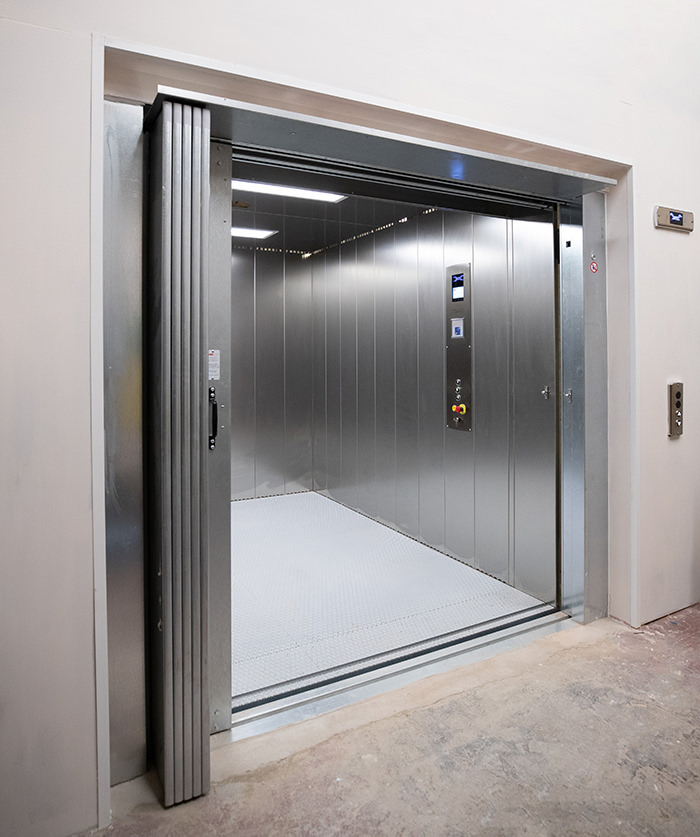London Lift Company: Providing Comprehensive Lift Solutions Throughout the Resources
Wiki Article
Exploring the World of Elevators: Common Concerns Faced by Different Lift Devices
As we browse with the vertical transport systems of modern buildings, elevators stand out as an important component of our lives. Nevertheless, behind their smooth procedure lies a world of complex devices that can in some cases come across difficulties. From hydraulic lifts to grip systems and machine-room-less layouts, each lift kind features its collection of typical issues. Understanding these obstacles is essential for making certain the smooth performance of these vital systems. Allow's check out the intricacies that underlie the procedure of elevators and the potential issues that can develop, losing light on the detailed web of lift devices.Hydraulic Lifts
Hydraulic lifts, often chosen for low-rise structures, utilize fluid pressure to control the activity of the lift car (lift repair companies). This device entails a hydraulic pump pressing oil right into a cylinder, creating the elevator to move in the wanted direction. While hydraulic elevators are recognized for their quiet and smooth procedure, they do include their very own set of typical issuesOne widespread issue with hydraulic lifts is oil leakage. Additionally, concerns with the control system, such as defective valves or a malfunctioning pump, can cause disruptions in the elevator's motion.
Routine upkeep and punctual repair work are essential to ensure the smooth functioning of hydraulic lifts. By resolving these typical problems proactively, building proprietors can reduce downtime and make sure the security and performance of their upright transport system.
Grip Elevators
When thinking about upright transport systems in buildings, one more common type aside from hydraulic lifts is the grip lift. Grip lifts run utilizing a system of ropes and counterweights that relocate the elevator automobile by clutching onto the hoist ropes. This system allows for smoother and much faster upright transportation contrasted to hydraulic systems.One of the typical concerns dealt with by traction elevators is rope wear. The continuous motion of the ropes within the grip system can result in damage gradually, potentially creating the elevator to malfunction or become risky for use. Normal evaluations and upkeep of the ropes are important to make sure the lift's proper performance and safety.
An additional issue that grip elevators may come across is associated with the control system. Issues with the control system can bring about concerns such as unpredictable movement, delays in reaction times, or even complete shutdowns. Normal testing and upkeep of the control system are critical to stop such concerns and ensure the elevator's integrity.
Machine-Room-Less (MRL) Lifts

One of the vital components of MRL lifts is the portable gearless grip equipment that is set up within the hoistway. This machine effectively drives the elevator cars and truck without the demand for cumbersome equipment located in conventional traction lifts. In addition, MRL lifts generally make use of a weight system to stabilize the automobile, more boosting their power effectiveness.
In spite of their advantages, MRL elevators might encounter difficulties associated with upkeep and fixing because of the restricted space for devices setup. Ease of access for servicing parts within the shaft can be limited, requiring specialized training for specialists. Appropriate upkeep timetables and regular inspections are essential to make sure the ongoing smooth operation of MRL elevators.
Overloading and Weight Limitation Issues
Overloading and weight limitation problems are critical issues in lift procedures. Lift makers style raises with details weight capacities to make certain traveler security and equipment durability.When elevators are strained, it puts excessive stress on the motor, cable televisions, and various other elements, potentially triggering breakdowns or breakdowns. Safety devices such as sensing units and overload sensors are in location to avoid lifts from relocating if they identify excess weight. Furthermore, going beyond weight restrictions can cause enhanced energy consumption and deterioration on the lift system.
To reduce straining concerns, building managers More hints need to plainly present weight restrictions in elevators and educate passengers on the value of sticking to these restrictions - lift repair companies. Regular maintenance checks by certified service technicians can likewise aid ensure that lifts are operating within safe weight specifications. By addressing overloading and weight limitation concerns proactively, structure owners can improve lift safety and effectiveness
Electric System Failures
Surpassing weight limitations in lifts can not just lead to mechanical issues however additionally potentially add to electrical system failures within the lift facilities. Electric system failings are a crucial worry in lift operation, as they can cause unexpected shutdowns, malfunctions, and even safety and security threats. One common electrical problem is the getting too hot of elements as a result of too much existing circulation brought on by overloading the elevator past its ability. This can bring about harm to the electric motor, circuitry, or control systems, causing pricey repair work and downtime.Regular maintenance and inspections are vital to identify and address possible electrical problems promptly, guaranteeing the reliable and safe operation of elevator systems. By adhering to weight restrictions and conducting routine electric system checks, structure find out owners can alleviate the threat of electrical failings in elevators.
Final Thought

Hydraulic lifts, often chosen for low-rise structures, utilize fluid pressure to regulate the activity of the elevator car.When taking into consideration vertical transportation systems in structures, one more common kind aside from hydraulic elevators is the traction lift. Traction elevators run utilizing a system of ropes and counterweights that relocate the lift automobile by clutching onto the hoist ropes. Unlike standard elevators that require a different machine space to house the tools, MRL elevators integrate many of the parts within the shaft, eliminating the requirement for a committed maker area.In conclusion, elevators encounter usual problems such as hydraulic breakdowns, grip system failings, and electric system problems.
Report this wiki page